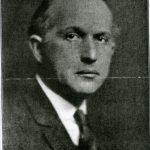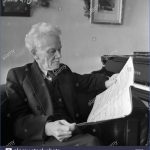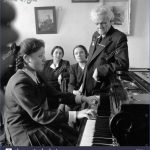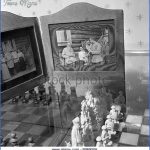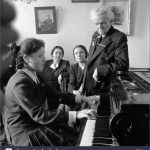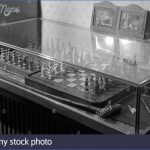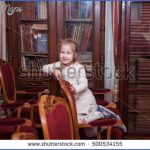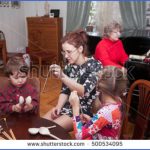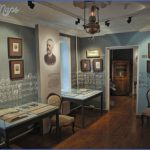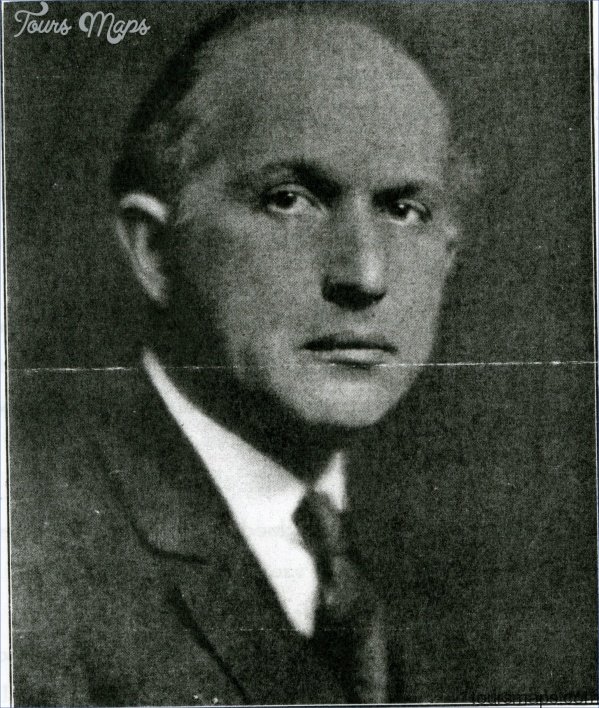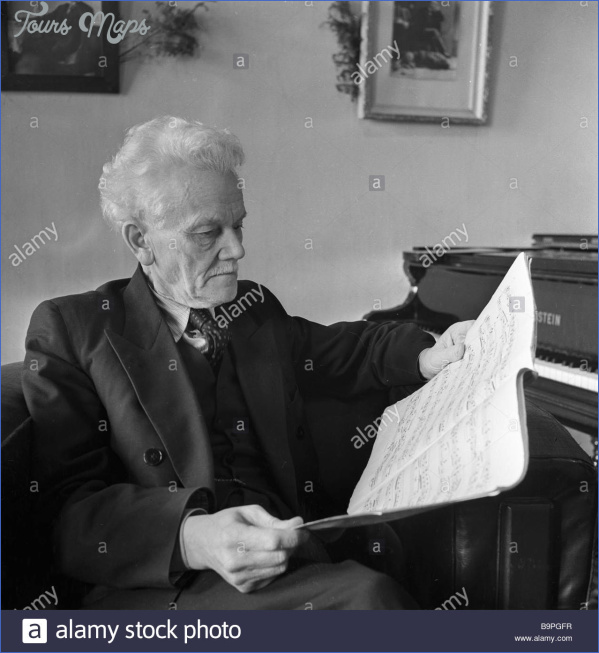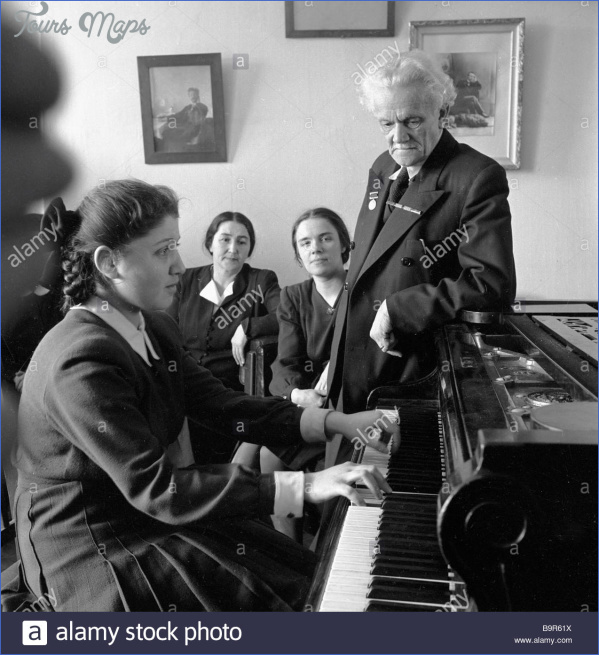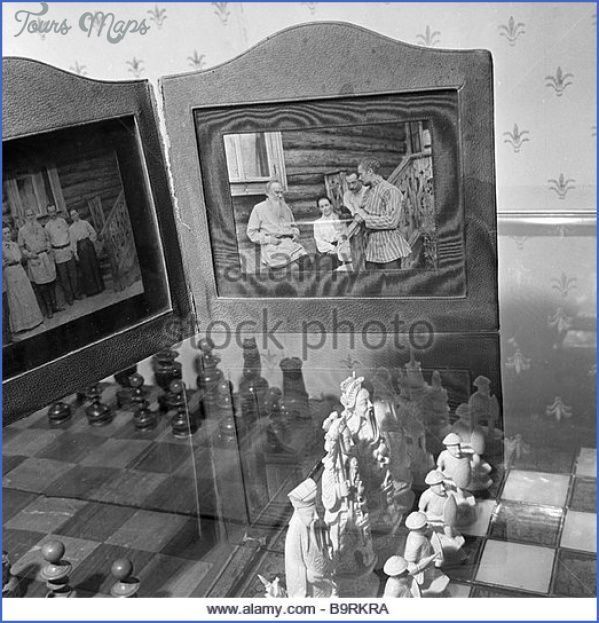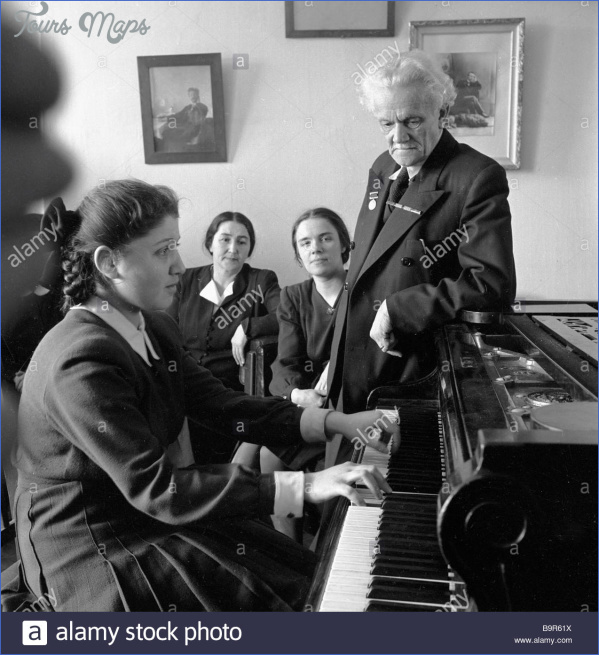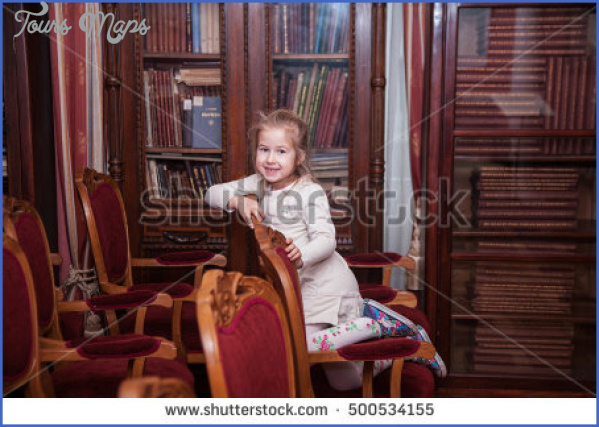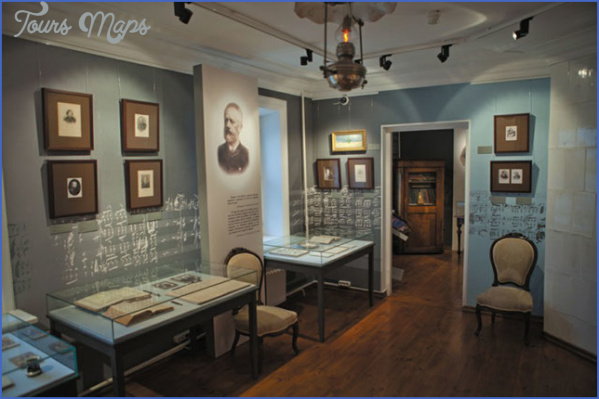GOLDENWEISER MUSEUM
The Moscow flat once belonging to Aleksandr Goldenweiser (or Gol’den-veyzer) is very much a time capsule documenting an era in Soviet musical life: one that centred on the Moscow Conservatory and ended with Goldenweiser’s death, at the age of 86, on 26 November 1961. A gifted pianist, a composer and above all an enlightened teacher, born in 1875, Goldenweiser was anxious to preserve a record of his time. Although his second wife was still living, he arranged in 1955 that his archives, library, pianos, furnishings and even his smallest personal possessions should become the property of the State; in 1959 the adjacent flat was acquired to augment the display space and shortly afterwards a sort of‘living museum’ – in which he and his wife Elena still lived – opened to the public. His widow survived him by many years and worked tirelessly to keep his memory alive among his many pupils and friends.
Of the six principal rooms of the enlarged third-floor flat, the large corner room houses Goldenweiser’s two Bechstein grand pianos and a remarkable, framed, photographic collection that chronicles in turn his teachers (including Pabst, Arensky, Tchaikovsky and Taneyev), his friends (among them Rakhmaninov, Skryabin and Medtner), his piano pupils (notably Ginzburg, Tat’yana Nikolayeva and Kabalevsky) and his contemporaries (including Myaskovsky and Shostakovich); some of them are autographed pictures (Glazunov, Rimsky-Korsakov, Van Cliburn, Szigeti and Petri). It was here that, near the end of his life, Goldenweiser inaugurated a series of ‘Musical Thursdays’, to revive the tradition of domestic music-making; they continue today in the memorial flat.
Next to it is Goldenweiser’s tiny study-cum-bedroom, crowded with furniture -a large desk with a picture of his first wife Anna, a secretaire, his iron bed and night table, armchairs and a sofa, a bookcase and a folding screen – supposedly arranged just as in his day. On the wall are framed photographs of relatives, in particular his mother and, next to his bed, one of the writer Leo Tolstoy in death.
GOLDENWEISER MUSEUM Photo Gallery
The displays in a third room were created in 1978 to mark the 150th anniversary of the birth of Tolstoy, who in his last years (1896-1910) had been a friend and mentor to Goldenweiser. Called the ‘Tolstoy Nook’, it contains mementoes of Tolstoy himself – his belt, his walking-stick, a teacup and saucer and a pen given to Goldenweiser in 1910 – as well as letters, chess sets that the men used at Tolstoy’s dacha at Yasnaya Polyana (captured in photographs along with their chess games), chairs once belonging to Tolstoy and a cherished 90-volume set of Tolstoy’s writings. In tribute to Tolstoy’s love of the music of Chopin there is a death mask and a plaster cast of the composer’s right hand, along with a life mask of Beethoven and a bust of Nikolay Rubinstein, founder of the Moscow Conservatory. But Goldenweiser’s ultimate homage to Tolstoy was a box with soil from Tolstoy’s grave, which was buried with him.
The fourth room, once the diningroom but now the ‘Room of Souvenirs’, is dominated by a thoughtful photographic portrait and a bust of Goldenweiser from the 1950s and portraits of Anna (who died in 1929). The souvenirs include her porcelain collection, small gifts from his students, a half death mask of Medtner and a cast of his hands, an original death mask of Liszt and Rubinstein’s framed collection of dozens of signatures of musicians, inscribed in rows on a single large sheet of paper.
Two further rooms contain a general library of more than 10,000 books (and yet another death mask, this time of Pushkin) as well as a tightly packed archive of Goldenweiser’s dedicated library of printed music and books about music, his own manuscript compositions (with at least four operas, piano music, songs, trios and string quartets, very little of which, because of his legendary modesty, was ever performed outside the flat), correspondence with Rimsky-Korsakov, Taneyev, Rakhmaninov and Medtner, as well as photographs, concert programmes and reviews, and his diaries, themselves a rich resource for research on the period.
The flat (no.110, with the adjoining 109) is reached from the rear of the late 1930s building, at an entrance marked with a sign.
Maybe You Like Them Too
- Top 10 Islands You Can Buy
- Top 10 Underrated Asian Cities 2023
- Top 10 Reasons Upsizing Will Be a Huge Travel Trend
- Top 10 Scuba Diving Destinations
- World’s 10 Best Places To Visit

